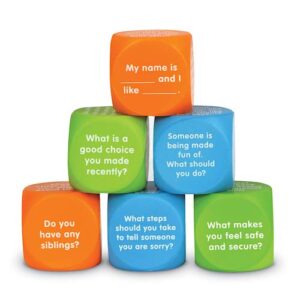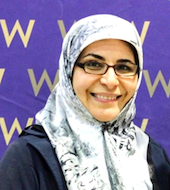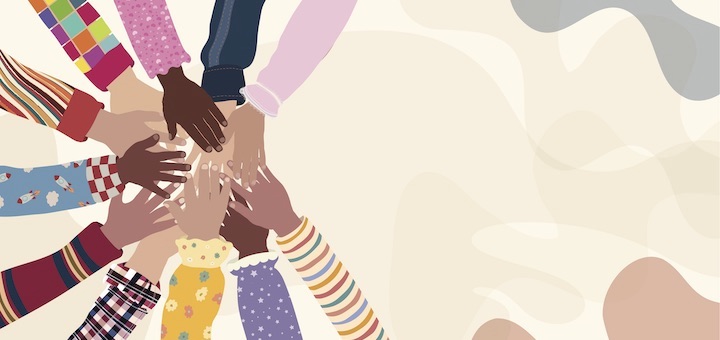How Classroom Circles Help Us Build Community
If you are an educator or a parent with school-aged children, you have most likely heard about SEL (Social Emotional Learning) and its significant effects on students’ emotional well-being and academic performance.
Over the past few years and after collaborating with several amazing school counselors, I learned how to enrich my classroom’s social-emotional environment with community-building circles. Our regular circles experience allows me to witness my students thrive in a safe and inclusive learning environment.
Here are some lessons I’ve learned along the way.
Lesson #1 – Everyone needs a safe, inclusive and loving space.
I teach in a Title 1 school. My students often experience multiple life challenges and adversities that are even difficult for adults to deal with. When they come into the classroom, they need to know I care for them as an individual and love them no matter what.
Our weekly community-building circles give them assurance that they are loved, cared for, and are enough just the way they are. Our first meeting is always an introduction and sharing of something we are good at and can help teach to others.
We follow this with a discussion: “What makes a classroom a safe, inclusive, and loving environment?” Here are a few examples my fourth-graders shared:
✻ I know that I am loved because my teacher greets me with a smile every morning.
✻ I know that I am included and safe because I see a flag of my country on the classroom wall and because my teacher tells us every day that she loves ALL of us.
✻ I know she cares because she put my drawing on the wall, it wasn’t my best work, but she said she loves it.
✻ When I go to the board to solve a problem, my friends and teacher clap for me. If I make a mistake, no one judges me.
Lesson #2 – A safe place means each person takes care of themselves and their teammates.
I believe that in each classroom, there are as many junior teachers as the number of students. Every student has a unique skill they can teach others. It doesn’t have to be an academic skill, it can be how to play a certain sport, how to draw, or make crafts. They lighten up when I give them the opportunity to share their skills and teach what they are good at. This makes them feel a valued member who contributes to the success of the team.
I pair my students and each pair has complementary skills. For example, one student is more proficient in math and needs more help in reading while the other one is a fluent reader but needs more support in math. My students know that we are a team, every member is in charge of his/her success and helping his/her partner to succeed. They also know that helping means teaching the skill and not giving the answer because, on the test, they cannot give answers to one another.
Lesson #3 – The teacher does not have all of the answers.
Our students are so capable – especially when it comes to technology and problem-solving! Once in a while, I have students whose laptops are not connected to the internet or cannot access certain lessons on the Canvas. When a problem like this happens, there are always a couple of volunteers in the classroom who raise their hands to help.
I am overjoyed knowing that I have these amazing helping hands and when I see how much my school kids crave peer teachings and enjoy their learning experiences from and with one another.
Lesson #4 – Academic growth and test scores are not always the most important things teachers do.
As educators, we set high and achievable goals for our students. We support them along the way, differentiate our lessons, provide extra scaffolding for those who need it, and do our best to ensure our students’ academic success.
While our students’ educational achievement is important, their emotional well-being comes first. Sometimes it is ok to ditch the lesson and just listen to them. A student who is experiencing trauma or going through a challenge cannot be productive in the classroom. My students usually openly share what bothers them. If not, they always have caring friends who come forward and share their concerns about a friend.
In times like this, I stop the lesson if possible, then either talk to the student who needs emotional support one-on-one, or if the problem is something that everyone is affected by, we sit in our community circle and talk about it.
One of the recent events that caused stress and anxiety in my students was the shooting in Uvalde Elementary school. The next morning, kids walked into the classroom with a range of emotions; deeply sad, scared, and threatened. We sat on the floor and just talked about who heard the news, what they heard, and how it made them feel. When kids are experiencing emotional stress, it is essential to stop the lesson and make sure they feel loved, safe and supported.
Lesson #5 – Ground rules for the community circles are very important.
Our students need to know what is being said in the circle will stay in the circle. They also need to know they are not being judged for what they share and what they are experiencing.

The use of these cubes builds students’ conversational and social skills through a fun and safe activity. Students learn the expectations and ground rules; we keep what we heard to ourselves, we do not judge, we listen respectfully, and we wait for our turn. Eventually, students learn to trust each other and share openly. (Conversation cards might be used with middle school students. Example.)
Lesson #6 – Sharing your own experiences can help to build trust within the community.
As we sit in a circle on the classroom floor, I roll the communication cubes too, and I share my preferences and appropriate life experiences with my students. When I am going through a hard time, I let my students know that I am not having a good day and I appreciate their emotional support. This helps my students to see me as a human being who has feelings and who has similar experiences they or their family members have. For whatever reasons, our students see their teachers differently from normal human beings (this can explain why they get so surprised seeing us in public places like a supermarket and a library.)
My dad passed away at the end of August 2021. He died overseas, so I didn’t get a chance to visit him and say goodbye. I heard the news over the weekend and went to school on Monday. I knew being around my students elevates my soul and helps my emotional distress. I told them what happened and that I didn’t want to get a substitute because I wanted to be with them.
My tears rolled down as I talked to them. Several of my students immediately jumped out of their chairs and hugged me tightly. The rest (shy ones) joined after. Later that day one of my girls wrote a note to me and talked about how hard it was for her when she lost her dad a year earlier and how she can relate to my feeling.
Sharing my pain helped her to open up about hers. As teachers, we are part of the community circles and can teach children vulnerability and care by appropriately sharing our loves.
Lesson #7 – Community circles help equip all our students for the future.
Recently I was talking with a close friend whom I have known since August 2000 when my family and I came to the United States. As part of her job, she works with young couples, graduate students, and families in university housing.
As she shared some stories about university students dealing with conflict in their community, she told me that many university students lack the skills to deal with simple conflict. Many complain to management and want them to deal with the situation rather than getting to know their neighbors and building social skills to care for and empathize with their community members. We laughed as we realized the similarities in our jobs even though she is working with adults!
The life skills that our students learn in our classrooms prepare them for the real world. Every day is a great opportunity to build up their social skills, to create a sense of love and empathy for all human beings, to respect differences, and to focus on common values that bring us together.
Whether they bring joy or sorrow, we can always learn lessons from one another. Who knew so much wisdom could be found in a 4th-grade classroom?
Read more of Laleh’s Lessons here.
Laleh Ghotbi started her teaching career in 1992 in Iran, where she taught in middle and high school for seven years and worked as an academic coach at the school district for the next two years. She came to the United States with her husband and their 8-year-old son in August 2000. Since then, she has earned two master’s degrees – a Master of Science and Technology-Biotechnology from the University of Utah, and a Master of Arts in Teaching from Westminster College where she graduated with honors and was chosen as the 2017 commencement speaker. She currently teaches 4th grade in Salt Lake City, Utah.



































